
Bennie Maupin is an American jazz multireedist who performs on various saxophones, flute, and bass clarinet.
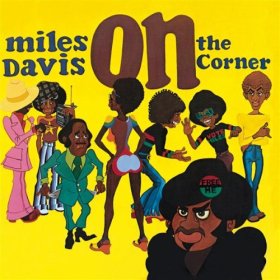
On the Corner is a studio album by American jazz trumpeter, bandleader, and composer Miles Davis. It was recorded in June and July 1972 and released on October 11 of the same year by Columbia Records. The album continued Davis's exploration of jazz fusion, and explicitly drew on the influence of funk musicians Sly Stone and James Brown, the experimental music of Karlheinz Stockhausen, the free jazz of Ornette Coleman, and the work of collaborator Paul Buckmaster.

Marion Brown was an American jazz alto saxophonist, composer, writer, visual artist, and ethnomusicologist. He was a member of the avant-garde jazz scene in New York City during the 1960s, playing alongside musicians such as John Coltrane, Archie Shepp, and John Tchicai. He performed on Coltrane's landmark 1965 album Ascension. AllMusic reviewer Scott Yanow described him as "one of the brightest and most lyrical voices of the 1960s avant-garde."

Man-Child is the fifteenth studio album by jazz pianist Herbie Hancock. The record was released on August 22, 1975 by Columbia Records. It was the final studio album to feature The Headhunters, and a number of guest musicians including saxophonist Wayne Shorter, a full brass section, three different guitarists, and Stevie Wonder on harmonica.

Chick Corea (1941–2021) was an American jazz pianist and composer born on June 12, 1941, in Chelsea, Massachusetts. Corea started learning piano at age four. He recorded his first album, Tones for Joan's Bones, in 1966. Corea performed with Blue Mitchell, Willie Bobo, Cal Tjader and Herbie Mann in the mid-1960s. In the late 1960s he performed with Stan Getz and Miles Davis. The National Endowment for the Arts states, "He ranked with Herbie Hancock and Keith Jarrett as one of the leading piano stylists to emerge after Bill Evans and McCoy Tyner, and he composed such notable jazz standards as 'Spain', 'La Fiesta', and 'Windows'."
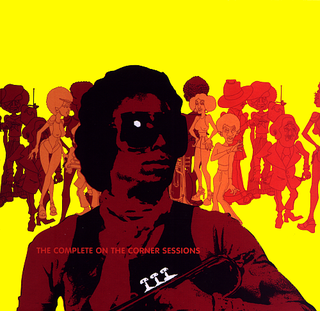
The Complete On the Corner Sessions is a posthumous box set by American jazz musician Miles Davis, released in the US on September 25, 2007, by Columbia Records and in the UK on September 29 on Legacy Recordings. Like other Davis box sets, the included material is taken from a wider chronology of sessions than the dates which actually produced the titular album. The Complete On the Corner Sessions compiles material from 1972 through 1975 which, due to lineup changes Davis made throughout the era, features over two dozen musicians.

Conference of the Birds is an album by the Dave Holland Quartet, recorded on 30 November 1972 and released on ECM the following year—Holland's debut as bandleader and fourth project for the label. The quartet features alto saxophonist Anthony Braxton, tenor saxophonist Sam Rivers, and percussionist Barry Altschul.
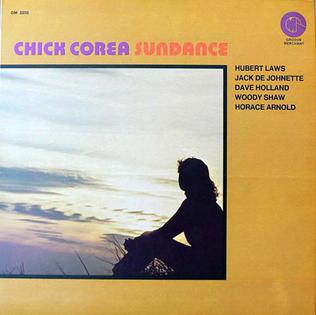
Sundance is a studio album by jazz pianist Chick Corea, recorded over three days in May of 1969 and released on Groove Merchant in February 1972. The album Is included material from the same sessions. The album features a septet with trumpeter Woody Shaw, tenor saxophonist Bennie Maupin, flautist Hubert Laws, bassist Dave Holland and drummers Jack DeJohnette and Horace Arnold.

Anthony Braxton is an album by Anthony Braxton, released in 1969 on the BYG Actuel label. It features performances by Braxton, violinist Leroy Jenkins, trumpeter Leo Smith and percussionist Steve McCall.

In the 1970s in jazz, jazz became increasingly influenced by Latin jazz, combining rhythms from African and Latin American countries, often played on instruments such as conga, timbale, güiro, and claves, with jazz and classical harmonies played on typical jazz instruments. Artists such as Chick Corea, John McLaughlin and Al Di Meola increasingly influenced the genre with jazz fusion, a hybrid form of jazz-rock fusion which was developed by combining jazz improvisation with rock rhythms, electric instruments, and the highly amplified stage sound of rock musicians such as Jimi Hendrix. All Music Guide states that "..until around 1967, the worlds of jazz and rock were nearly completely separate." However, "...as rock became more creative and its musicianship improved, and as some in the jazz world became bored with hard bop and did not want to play strictly avant-garde music, the two different idioms began to trade ideas and occasionally combine forces." On June 16, 1972 the New York Jazz Museum opened in New York City at 125 West 55th Street in a one and one-half story building. It became the most important institution for jazz in the world with a 25,000 item archive, free concerts, exhibits, film programs, etc.

Circling In is a double LP collection by jazz pianist Chick Corea featuring performances recorded between 1968 and 1970, including the first recordings by the group Circle, which was first released on the Blue Note label in 1975. It contains trio performances by Corea with Miroslav Vitouš and Roy Haynes recorded in March 1968, which were later added to the CD reissue of Now He Sings, Now He Sobs as bonus tracks, and performances by permutations of the band Circle recorded in April and July 1970 some of which were later released as Early Circle.
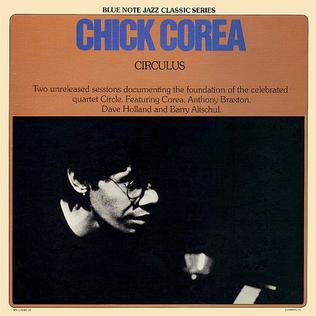
Circulus is a double LP released under jazz pianist Chick Corea’s name, featuring performances recorded in 1970 by the free jazz group Circle, which was first released on the Blue Note label in 1978.
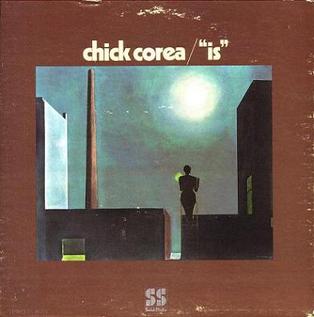
Is is the third studio album by Chick Corea, recorded over three days in May of 1969 and released on Solid State Records later that year. The album features a septet with trumpeter Woody Shaw, tenor saxophonist Bennie Maupin, flautist Hubert Laws, bassist Dave Holland and drummers Jack DeJohnette & Horace Arnold.

Geechee Recollections is an album by the American jazz saxophonist Marion Brown recorded in 1973 and released on the Impulse! label. Along with Afternoon of a Georgia Faun and Sweet Earth Flying, it was one of Brown's albums dedicated to the US state of Georgia. The Geechee of the title are a distinct African-American cultural group living in costal regions of Georgia and North Carolina.

The Complete Braxton is an album by American jazz saxophonist and composer Anthony Braxton recorded in 1971 and released on the Freedom label. It features a variety of musicians, including trumpeter Kenny Wheeler, pianist Chick Corea, bassist Dave Holland, drummer Barry Altschul, and the London Tuba Ensemble.
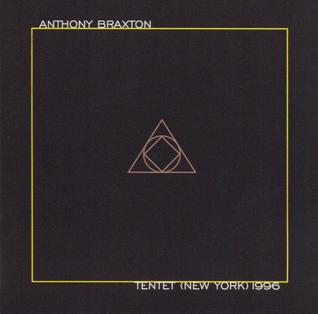
Tentet 1996 is a live album by composer and saxophonist Anthony Braxton with an ensemble, recorded at the Knitting Factory in 1996 and released on his own Braxton House label.

Wildflowers: The New York Loft Jazz Sessions is a series of five albums recorded May 14–23, 1976 at Studio Rivbea, a loft jazz space in New York City, run by Sam Rivers and his wife Bea. The albums include performances by groups led by musicians such as Hamiet Bluiett, Anthony Braxton, Marion Brown, Dave Burrell, Andrew Cyrille, Oliver Lake, Jimmy Lyons, Ken McIntyre, Kalaparusha Maurice McIntyre, Roscoe Mitchell, David Murray, Sunny Murray, Sam Rivers, Leo Smith, Henry Threadgill, and Randy Weston. The recordings were originally released in 1977 on the Douglas and Casablanca labels as five separate LPs, and were reissued in 1999 by Knit Classics as a 3-CD set.

Symphonic Tone Poem for Brother Yusef is an album by multi-instrumentalist Bennie Maupin and percussionist Adam Rudolph. It was recorded at Clear Lake Studio in New Jersey, and was released in 2022 by Strut Records. The album pays homage to Yusef Lateef, who would have been 100 years old in 2020, and who had a personal connection with both musicians.

Circle 1: Live in Germany Concert is a live album by Circle, a free jazz quartet that featured multi-instrumentalist Anthony Braxton, pianist Chick Corea, double bassist Dave Holland, and drummer Barry Altschul. It was recorded by German radio on November 28, 1970, in Iserlohn, West Germany, during an extended European tour that also took the group to the Netherlands, Belgium, and France, and was released on vinyl in 1971 by CBS/Sony Japan. Along with Circle 2: Gathering, the album was reissued on CD by Corea's Stretch label during the 1990s.
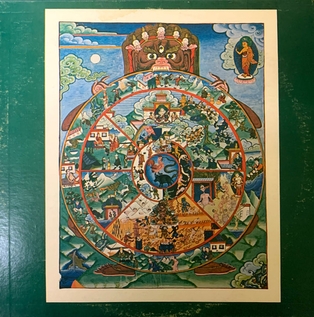
Whisper of Dharma is the debut album by the Human Arts Ensemble, a musical collective that was an offshoot of the St. Louis-based Black Artists Group. Consisting of two 22-minute pieces, it was recorded on October 6, 1972, in St. Louis, and was initially released later that year by the small Universal Justice label. In 1977, it was reissued by Arista/Freedom with different cover art. The album features drummer and group leader Charles "Bobo" Shaw, saxophonists Oliver Lake, J. D. Parran, and James Marshall, trumpeter Floyd LeFlore, trombonist Joseph Bowie, multi-instrumentalist Baikida Carroll, and percussionist Gene Lake, who was six years old at the time of the recording session. On the recording, the musicians supplemented their primary instruments with miscellaneous "small instruments" plus a Tibetan trumpet introduced by Marshall, who had just returned from a trip through India and Nepal.




















